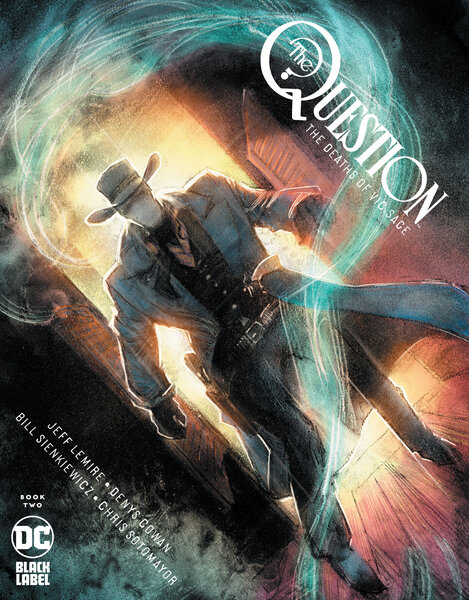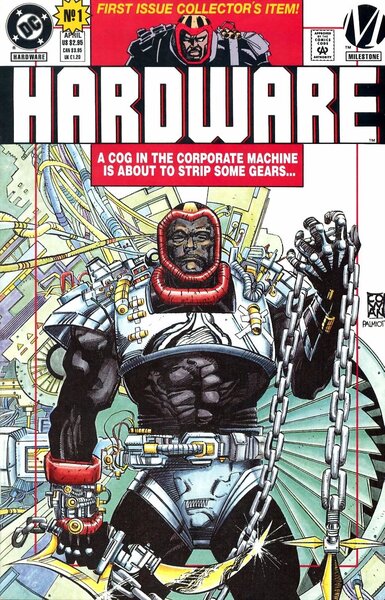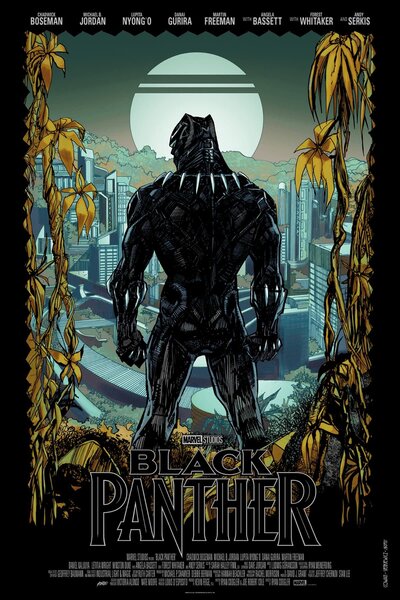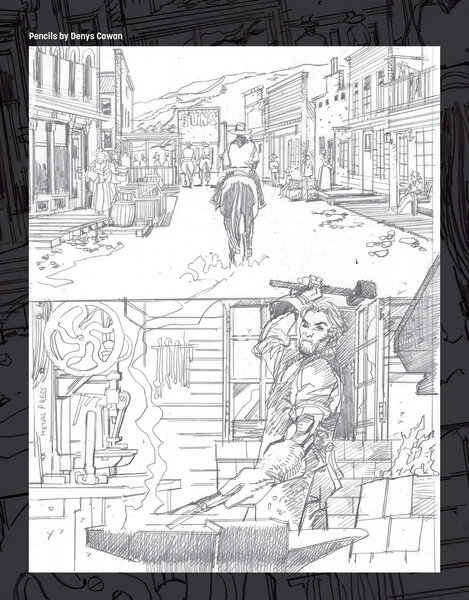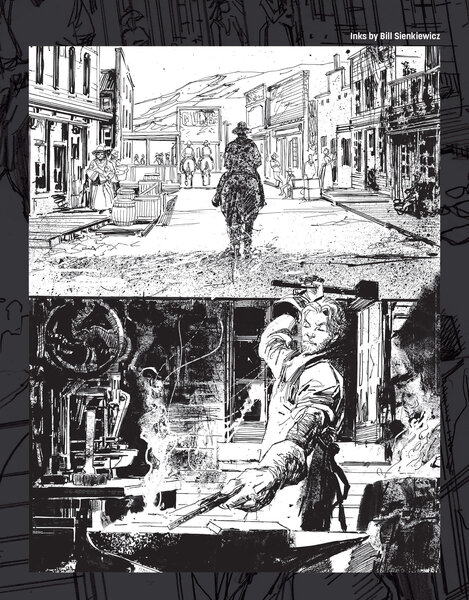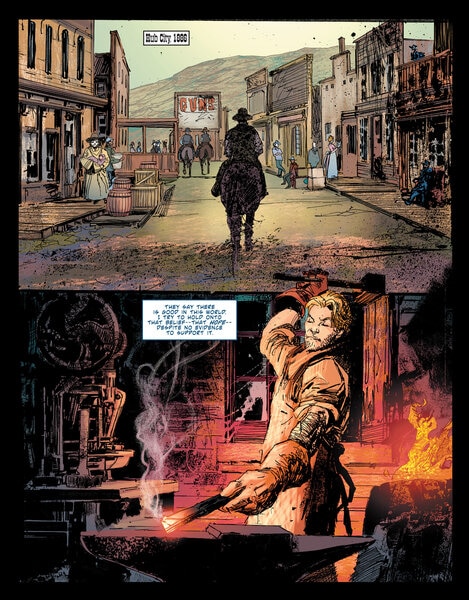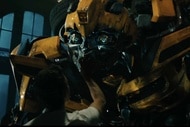Create a free profile to get unlimited access to exclusive videos, sweepstakes, and more!
Denys Cowan on The Question's legacy and when Milestone Comics is definitely coming back
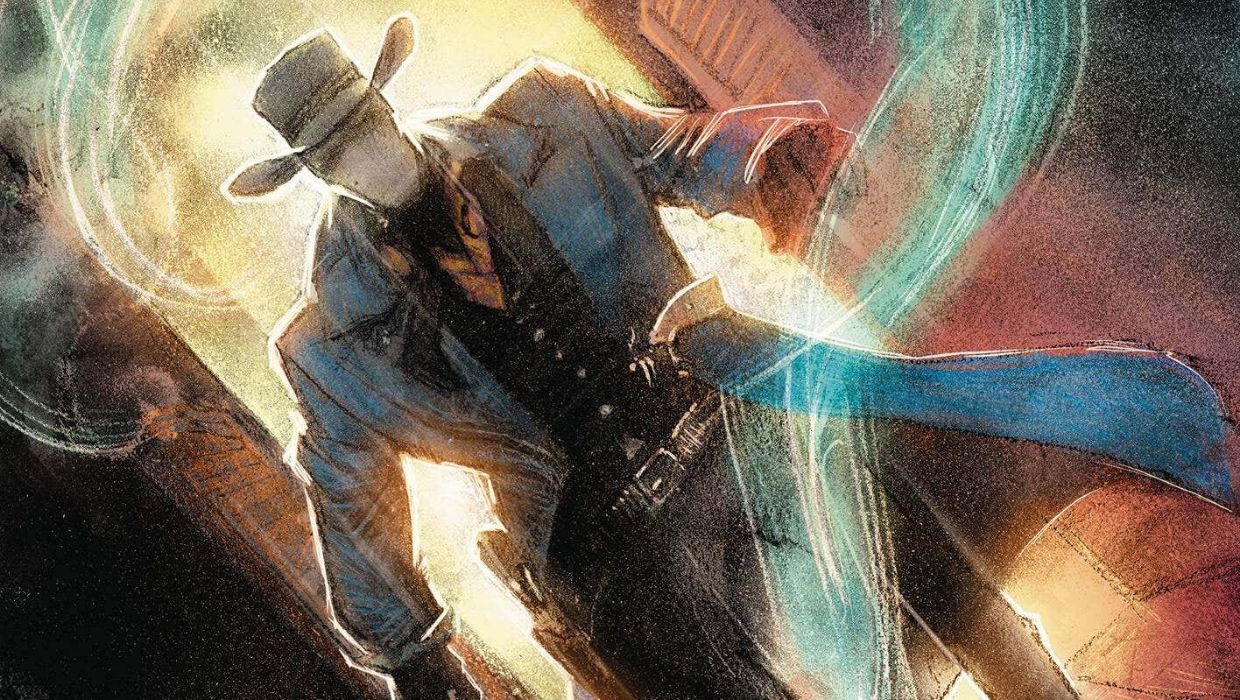
Growing up, Denys Cowan fondly remembers the smell of linseed oil wafting through his Bronx apartment whenever his mother was inspired to paint. He was fascinated by her hobby and would draw with anything he could get his hands on by the age of 3. Unfortunately, by the third grade, Cowan’s mom had passed, and he often only had reruns of the 1950s Adventures of Superman series as a babysitter while his grandmother worked overtime to support him and his siblings. Art became his outlet, and one day while drawing stick figures in the back of the classroom, a boy named Derek took a seat next to him and opened the first comic book that Denys would ever see. That small moment would change the trajectory of Denys Cowan’s entire life.
Cowan and his friend Derek Dingle would grow up to co-found Milestone Comics along with Michael Davis and mastermind Dwayne McDuffie. A groundbreaker ahead of its time, Milestone Media went on to be the first African-American-owned publisher distributed by a major comic book company, DC Comics.
But Cowan was contributing to comics long before his Milestone days. He began his career as an intern at Marvel for Rich Buckler at just 14 years old. The artist has drawn classic characters for comics like Black Panther (1988) and Powerman and Iron Fist, which he worked on with both Mary Jo Duffy and Dennis O’Neil starting in 1982. Cowan also worked on his first big DC Comics project that same year with O’Neal when they collaborated on the first run of The Question in 1987.
Over 30 years later, Cowan’s career has come full circle. In 2018, he collaborated with Bill Sienkiewicz and Chris Sotomayor on a collector’s-edition poster for the Black Panther movie. Then he worked with the team again when Jeff Lemire asked them to return to The Question: The Deaths of Vic Sage for DC Black Label (2019). And to add to just how busy he’s been for the past few years, there’s new interest in Milestone by fans who’ve just discovered long-beloved characters like Static and Rocket.
SYFY WIRE spoke with Cowan about his origin story, what it’s like returning to Vic Sage, how real-life events inspired the Dakotaverse, and when Milestone Comics is coming back.
What was that first comic that Derek Dingle showed you?
The comic book was a Jack Kirby New Gods comic with Black Racer. I was looking at this thing like, "What is this?" And Derek says, "It’s a comic book." "Well, how does this happen?" And he tells me about this guy Jack Kirby who wrote and drew it. So literally, my mind was blown by Derek Dingle, showing me my first comic book. That Jack Kirby comic changed everything.
You got into comics so young. What was that like?
At 14, I was an assistant. I worked for Rich Buckler and Ken Landgraf when I was in high school. Rich is who eventually brought me up to DC Comics. I worked for Rich for about a year or two, and then I worked for Neal Adams. So there I am, 15 years old and I'm working for Neal Adams at Continuity Studios full-time. It was an internship program. Instead of going to the High School of Art and Design in New York, which is where I was accepted, I was working for Neal. So I really was raised by these comic book guys in a profound way.
What’s it like seeing all of the new love for your original Milestone characters now?
A little surreal. I didn't know until recently that people are [still] really into these characters like that. So it's extremely gratifying. It's awesome. What a feeling to know that you help create something that people really respond to and still love. That's quite a thing to have happen, and not many people get to experience that.
You mentioned recently on DC Universe that Milestone’s "Bang Babies," who were targeted by the police, were inspired by the real-life bombing of the M.O.V.E. organization in Philadelphia. Can you expand on that?
I remember discussing this with Dwayne and trying to figure out how our characters were going to have powers. We had to create this whole universe. Dwayne was the one who brought up the M.O.V.E. organization and what happened [in Philadelphia] and how the cops blew up an entire city block trying to get this one organization and they killed all these people.
We instantly thought, "Oh! There's the catalyst." This is what the cops [in the Dakotaverse] are going to do to these kids. Once these "so-called gangs" are gathered, they're going to just bomb everybody. Except these bombs will have the [agent that gives them their powers]. We just extrapolated from there. So it wasn't a revelation or a big discussion. We just used that as inspiration. It was a little shocking to us at the time [to learn] that it had really happened, but at that time, we were in all our 30s and there wasn't a whole lot that shocked us.
Who was your favorite Milestone character?
Oh, they're all my favorite really. Probably the one I identify with the most is probably Hardware. Because that was the first thing that Dwayne and I did at Milestone together. I mean, we created everything, uh, you know, static, all the other characters. But the book that Dwayne and I decided to do together, we could've picked anything, um, was Hardware only because he best expressed how we felt about the comics industry and how we felt about things at that time. You know, it's like the, I think the first title in the first issue was "Angry Black Man," which should have told you everything about where we were. Not everyone's favorite cup of tea, but I certainly got a big kick out of doing Hardware. I really did.
It was also building on the success of what we explored [previously] in Deathlok: The Souls of Cyberfolk, which is basically the story of a black man trapped in a monster's body or a brain trapped in a body a metaphor for our experiences. How people perceive you and what you really are.
So many people are excited about Milestone’s return. Can you give us any details as to if or when will happen?
There were a couple of legal things that got in the way of Milestone launching originally. Unfortunately, you know, those are those the situations that people have to deal with and they happen in life. Those situations have been dealt with, successfully. We're all delighted with the results and now we're moving forward full steam ahead. I can't tell you exactly when you're going to see stuff, but I can tell you that you will see stuff and we'll be able to share some of the awesome things that we've been developing over the years and the new stuff that we're doing now. But we are unshackled, free and we're going to have stuff on the fans really soon and it's stuff that we're really excited about. I can't give you exact dates yet, but it's on and poppin' again.
What brought you back to The Question last year?
I had drawn The Question one other time before that and that was for DC’s Blackest Night crossover when they were bringing back some of the classic characters. We had stopped with Issue 35, and during the Blackest Night run, I got to do Issue 36. After that, I thought I was done with it. Then, Jeff Lemire reached out to me. He had been thinking about writing The Question and wanted to do it with me. We came up with a story, pitched it to [then DC co-publisher] Dan Didio and Dan totally rejected it. It wasn't good enough. We had to come back and come up with another story. We resubmitted and this time, Dan liked it. The powers that be DC liked it too and greenlit the book.
So I get the first script and I'm thinking this is going to be a piece of cake. Because I know [this character]. But I start to draw and I realize, that this might be the hardest stuff I've ever had to draw again. I'm digging through all this old artwork like, "Who was that dude who drew this stuff? 'Cause I certainly can't do this now." It became quite a journey. But I'm working on the last issues now, so it's gotten easier.
Vic Sage sees the world in black and white. But his journey this go-round is not. Fans have even noticed that your artwork is changing as his character does.
[Vic] doesn't understand it. He’s really just getting sucked into the world. And then he's getting beat up in it. Yeah, we did adjust the art to reflect his state of mind. Issue one takes place in the present day, but issue two takes place in the West. We did an entirely different style for that. It's colored differently. It's drawn a little differently. It's inked (Bill is so brilliant) differently. We were going for different looks for each one. And then the third one coming out next month is a completely different look. It takes place in the '40s. It’s black and white, film noir, lots of shadows. trench coats, fedoras, femmes fatales, old cars, and everything. We've been playing around visually with how we're representing each separate issue and also within the issue, visually for Vic.
You’re working with an amazing team on this book. What’s that been like?
Let's be real. It's Jeff Lemire, the writer, who's created an awesome script. This is such a pleasure to work on because he thinks so visually that I get to draw great stuff. And of course, Bill Sienkiewicz, my awesome collaborator and inker, is amazing. The key to successfully working with someone like Bill is just to do your very best all the time and then he can do his best.
But then there's Chris Sotomayor who's an amazing colorist. Chris has worked with us for years. I mean, Chris colored the Black Panther movie poster that we did. Chris has colored a bunch of like, you know, the Nighthawk covers from Marvel. He's done a lot of stuff and, and we usually call on him when we need an ace colorist. And you know, when this thing came up with the question, he was like, the only one we really thought of to, to, to do this. I've known Chris for a long time, so I've known him since he was a teenager. I'm glad that people dig it and they've been digging it for 30 years.
The Question: The Deaths of Vic Sage #3 (of 4) will hit shelves Apr 22, 2020
